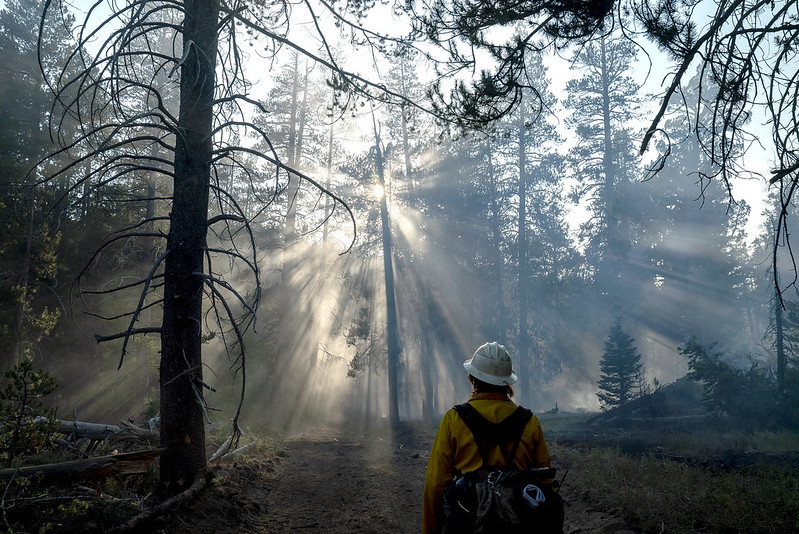
August 24, 2023
Cross-boundary Scenario Planning for Shared Stewardship
States are required by the USDA Forest Service to develop a Forest Action Plan on a recurring 10-year plan cycle. In 2020 when the state of New Mexico was required to revise their existing 2010 plan the state forester made the decision to develop the revised plan collaboratively with the Forest Service to aid in the implementation of the Agreement for Shared Stewardship signed by New Mexico Governor Michelle Lujan Grisham and USDA Forest Service Chief Vicki Christiansen in 2019. The plan would contain a vision and next steps for collaboration between agencies and organizations, not just guide the actions of the Forestry Division alone. The Vision included a framework to coordinate forest and watershed management via a strategy that addresses key issues in forest and watershed management in a changing climate. Scenario planning was utilized as a framework to build consensus among the agencies involved in planning. The primary goal was to identify where activities could achieve multiple restoration objectives, including reducing risk from wildfire and postfire impacts to water supply and water quality, communities, infrastructure, and biodiversity, and assessing tradeoffs between these objectives. We used ForSys to build optimal projects under the multiple objectives and examined the outputs to identify where forest management could achieve multiple shared restoration objectives to reduce wildfire risk to water supply and quality; communities and infrastructure; and biodiversity.
The results showed clusters of planning areas that were sources of substantial wildfire risk that span ownerships and forest types. Within a planning area there was a tradeoff between locating treatments to address wildfire risk to communities versus locating them in areas that will best reduce wildfire risk to water quality and supply. However, among planning areas the potential to treat two restoration priorities was often correlated, meaning that an area of high risk for water quality and supply was also an area of high risk to communities. The results also showed that risk was concentrated on particular ownerships within planning areas rather than spread out across multiple jurisdictions in terms of the areas identified for treatment in the modeling. Thus, planning areas were not necessarily compromised for not crossing boundaries.
In addition, given the collaborative nature of this multi-agency effort, the ForSys analytical approach provided a framework for a more collaborative prioritization process. Members of the coordinating group noted that the opportunity to assess multiple restoration objectives in a single model and examine tradeoffs among them, created an integrated approach to identify priority landscapes. It also helped identify opportunities to leverage financial, technical and labor-based resources to achieve desired management outcomes.





